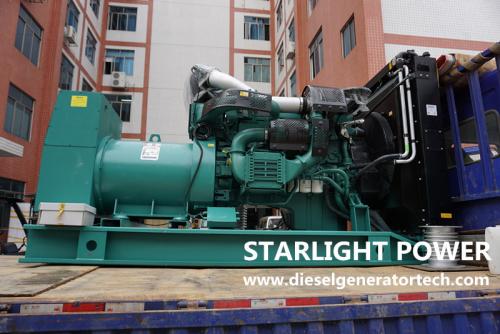Common Questions About Diesel Generators

What is a Diesel
Generator?
A diesel generator is
the combination of a diesel engine with an electric generator (often an
alternator) to generate electrical energy.
A diesel compression-ignition engine is designed to run on fuel oil, but
some types are adapted for other liquid fuels or natural gas.
Diesel generators are
used in places without connection to a mains electricity supply, or as an
emergency power-supply if the grid fails.
How do Diesel Generators
Work?
A diesel generator
converts diesel fuel into electricity.
The diesel engine burns diesel fuel in order to produce motion for the
generator, which converts the motion into electricity by using electromagnets.
Though a number of fuels
can be used to power similar engines, diesel is generally preferred for generators
because of its ability to burn but not explode. The fuel tank of the diesel
engine is filled, and the engine is started. A throttle and governor are used
to keep the speed of the diesel engine consistent in order to control the power
output of the generator while also preventing damage to components that could
be caused by the engine operating at too high a speed.
As the diesel engine
turns the crankshaft that connects to the generator, the central axle of the
generator is spun within a chamber containing electromagnets. This high-speed
motion causes an electric current to be produced, which is then available for
use by any equipment that is plugged in to the diesel generator.
What is an Acoustic
Enclosure?
Generators are large,
noisy and potentially dangerous, so where they are sited and how they are
protected demands special care.
Acoustic enclosures protect the machinery and those who work with it
from noise, vibration and the risk of fire. They also offer protection from the
weather as well as provide security, safe access and ventilation.
Where can Diesel
Generators be Used?
Portable Generators are usually used for
residential purposes to power a few domestic appliances during a power failure
or at construction sites that have no source of electrical power required to
operate tools.
Commercial Standby /
Industrial Generators are used in commercial facilities such as hospitals,
offices, manufacturing plants, mining operations, nursing homes, emergency
services and data centres. Anywhere that
cannot risk its ability to function being discontinued, due to a power failure,
usually has a generator in case of such circumstances.
What is a Diesel Engine?
The diesel engine is a
type of internal combustion engine, a compression ignition engine. The fuel in
a diesel engine is ignited by suddenly exposing it to the high temperature and
pressure of a compressed gas containing oxygen (usually atmospheric air), rather
than a separate source of ignition energy (such as a spark plug). This process
is known as the diesel cycle after Rudolf Diesel, who invented it in 1892.
Types of Diesel Engines
There are two classes of
diesel engines: two-stroke and four-stroke. Most diesel engines generally use
the four-stroke cycle, with some larger engines operating on the two-stroke
cycle.
What is the difference
between kW and kVA?
kW – kilowatt
kVA – kilovolt – ampere
The main difference
between these two measurements is the power factor. kW is real power, while kVA is apparent power
(real power + reactive power). The power
factor is typically 0.8, however it can range from 0 to 1. The kVA will value will always be higher than
the kW because it includes the reactive power.
Other than the US and a
small number of other countries who use kW, the rest of the world tend to use
kVA as the primary value, when referring to generators.
The kW unit rating is
the power output a generator can supply based on the horsepower of an engine. Horsepower is a unit of measure of power (the
rate at which work is done) equal to 550 foot-pounds per second. This is equivalent to 745.7 watts.
For example 1 horsepower
= 745.7 watts, therefore a 500 horsepower engine has a kW rating of 372,850.
What is a power factor?
The power factor (pf) is
defined as the ratio between real power (kW) and apparent power (kVA).
0.8 (pf) x 1500kVA =
1200kW
The standard power
factor for a three phase generator is 0.8.
The pf found on the ID place of a generator relates the kVA to the kW
rating. Bearing in mind that power
factors are anything between 0 and 1, generators with a higher power factor are
more efficient in transferring energy to the connected load, whereas generators
with a lower power factor are not as efficient and result in increased
power/fuel costs.
Post Your Ad Here
Comments